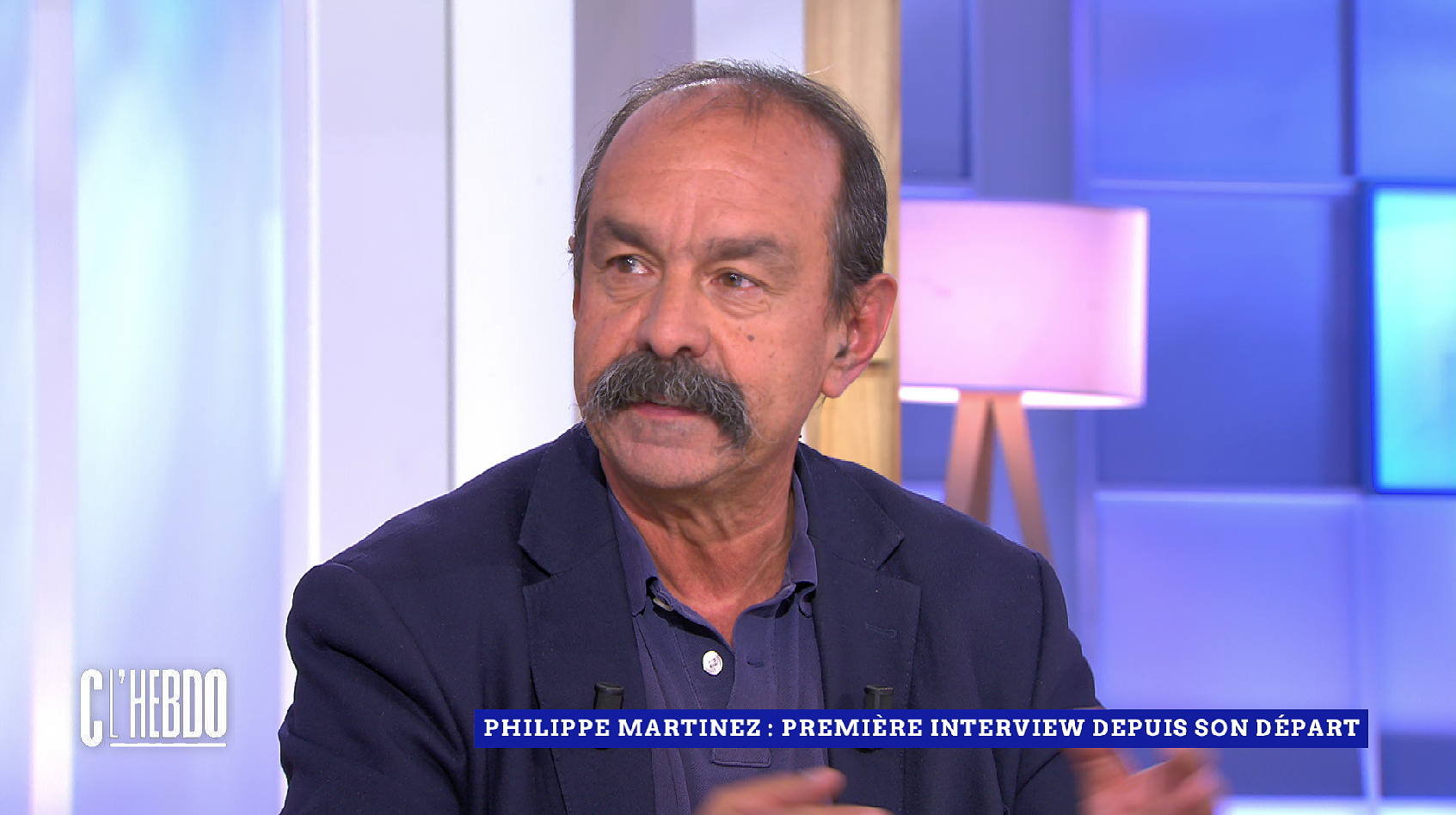Who was George Lucas until 1977, before Star Wars was released? A brilliant but misunderstood young director, visionary but introverted. How did this avant-garde man manage to bring the “Star Wars” project to fruition when no one in Hollywood – studios, technicians, actors, projectionists, etc. – believed in it? The Wars of Lucas (Deman éditions) tells this “forbidden” story. The book immerses the reader in the process of creating the saga. We also meet the George Lucas before the glitter. It is finally a part of Hollywood history, at the dawn of this science fiction revival. Laurent Hopman, screenwriter, and Renaud Roche, designer, deliver in-depth work, for Star Wars fans, but also (and above all) for others.
LE FIGARO. - If George Lucas, then a young director, had succeeded in adapting the adventures of Flash Gordon to the cinema, Star Wars might never have existed...
Laurent HOPMAN. - After his very first success, American Graffiti, he wanted to make a film that reconnected him with the wonder of his childhood. His imagination was nourished by serials, soap operas broadcast in cinemas in the 1930s and 1940s, rebroadcast on TV in the 1950s and 1960s, notably Flash Gordon... He was unable to obtain the rights. He then said to himself that he could create his own universe.
The gestation of the first Star Wars was long and painful. The Fox studios didn't believe it. They even tried to derail the project along the way. Why was George Lucas so misunderstood?
First, George Lucas was not a great communicator; he had difficulty sharing his vision with Fox executives. The film relied heavily on special effects. However, throughout the filming, he had nothing concrete to show them. People at the studios had difficulty visualizing what Star Wars was going to become: they saw sets, actors reading B-movie dialogue. And then they were above all businessmen; the artistic vision took second place. The only movie they could compare Star Wars to was 2001: A Space Odyssey. However, it was a very intellectual work which never brought in any money. For Fox all the signals were red. But in these people's defense, it was difficult to trust a young man of 32, who had only made one big hit, American Graffiti, in a very different genre. George Lucas faced the same problem that all visionaries face: being the first to show the path that everyone else can then follow.
To top it all off, we learn that writing was not George Lucas' strong point. The dialogues were sometimes even questioned by the actors, notably by Harrison Ford...
The others didn't do him any favors, but he was the first to be hard on himself. Originally, he wanted to be an editor. He wanted to be alone in the editing room and freely shape films. But to do that, you also have to be a director... And to be free behind the camera, you also have to have scripted the film yourself. So that’s why he had to decide to write.
Why was Star Wars so successful when it was released?
I would say that firstly the special effects really amazed the audience. At the time, there was no equivalent in cinema. Then there is, of course, the overall quality of the film. But there is also an adequate context. In the 1970s, there was no segment dedicated to teenagers in cinema. There were Walt Disney cartoons and then adult films. At that time, American society was ready to welcome family entertainment with universal values, well-defined good guys and bad guys. It set the tone for pop culture. George Lucas' influence has been immense on other filmmakers. It was after seeing the film that James Cameron decided to quit his job as a truck driver. You can be introverted, discreet and still have a phenomenal influence on the world, that's what our book is about.
What did it mean for you not to have had the approval of Disney or George Lucas to write this comic?
We never took the step. It was important for us to be independent. It would have been impossible to tell this story with Disney or George Lucas having a say. They want to control the legend. There are characters, interactions, that cannot be part of an authorized biography. Marcia Lucas, for example, has a key role. She even won an Oscar for Star Wars (best editing, Editor's note). She was Lucas's great love, but after their divorce, she was completely erased from the official version. It was important for us to rehabilitate it. The love story between Harrison Ford and Carrie Ficher, too, could not have been part of an official biography.
Do you know if George Lucas read the book?
We will wait for the English version to come out (16 foreign translations have already been signed, Editor's note), to send him the work officially. We know that people around him have read it. We think he will understand that it is above all a declaration of love for his work, even if he would certainly have wanted to erase certain passages.
You have carried out impressive documentation work. You made a point of listing all your sources at the end of the book. Many of the documents used date from the 1970s or 1980s…
We wanted to use what people said at the time the events took place. There was spontaneity then. Because after years, with the success and the work of the press officers, there was much more control. It was therefore necessary to find the oldest sources.
The drawing is sober but very dynamic with a certain sense of staging. What guided the graphic choices?
Renaud Roche, the designer, knows how to do very realistic, very advanced things. He is strong on the expressiveness of the characters. They have a lot of nuances. This is important because there are a lot of scenes in offices, which could be a little frozen, and yet he manages to make them dynamic.
Is this a black and white or color album?
Colorization only occurs in a few key boxes. The idea is to favor sobriety to highlight the story, but also to include touches of color. For example, there is the yellow “destiny”, each time there is a decisive encounter or a key element. Red also plays this role. Colors are mainly used to punctuate the narrative.
The Wars of Lucas, Deman éditions, 208 pages, 24.90 euros.

 B:SM will break its investment record this year with 62 million euros
B:SM will break its investment record this year with 62 million euros War in Ukraine: when kyiv attacks Russia with inflatable balloons loaded with explosives
War in Ukraine: when kyiv attacks Russia with inflatable balloons loaded with explosives United States: divided on the question of presidential immunity, the Supreme Court offers respite to Trump
United States: divided on the question of presidential immunity, the Supreme Court offers respite to Trump Maurizio Molinari: “the Scurati affair, a European injury”
Maurizio Molinari: “the Scurati affair, a European injury” Irritable bowel syndrome: the effectiveness of low-carbohydrate diets is confirmed
Irritable bowel syndrome: the effectiveness of low-carbohydrate diets is confirmed Beware of the three main sources of poisoning in children
Beware of the three main sources of poisoning in children First three cases of “native” cholera confirmed in Mayotte
First three cases of “native” cholera confirmed in Mayotte Meningitis: compulsory vaccination for babies will be extended in 2025
Meningitis: compulsory vaccination for babies will be extended in 2025 In the United States, a Boeing 767 loses its emergency slide shortly after takeoff
In the United States, a Boeing 767 loses its emergency slide shortly after takeoff The A13 motorway will not reopen on May 1
The A13 motorway will not reopen on May 1 More than 1,500 items for less than 1 euro: the Dutch discounter Action opens a third store in Paris
More than 1,500 items for less than 1 euro: the Dutch discounter Action opens a third store in Paris 100 million euros in loans, water storage, Ecophyto plan… New measures from the executive towards farmers
100 million euros in loans, water storage, Ecophyto plan… New measures from the executive towards farmers Books poisoned with arsenic present in French libraries
Books poisoned with arsenic present in French libraries New York justice returns 30 works of art looted from Cambodia and Indonesia
New York justice returns 30 works of art looted from Cambodia and Indonesia Les Galons de la BD dedicates War Photographers, a virtuoso album on the Spanish War
Les Galons de la BD dedicates War Photographers, a virtuoso album on the Spanish War Theater: Kevin, or the example of an academic failure
Theater: Kevin, or the example of an academic failure Skoda Kodiaq 2024: a 'beast' plug-in hybrid SUV
Skoda Kodiaq 2024: a 'beast' plug-in hybrid SUV Tesla launches a new Model Y with 600 km of autonomy at a "more accessible price"
Tesla launches a new Model Y with 600 km of autonomy at a "more accessible price" The 10 best-selling cars in March 2024 in Spain: sales fall due to Easter
The 10 best-selling cars in March 2024 in Spain: sales fall due to Easter A private jet company buys more than 100 flying cars
A private jet company buys more than 100 flying cars This is how housing prices have changed in Spain in the last decade
This is how housing prices have changed in Spain in the last decade The home mortgage firm drops 10% in January and interest soars to 3.46%
The home mortgage firm drops 10% in January and interest soars to 3.46% The jewel of the Rocío de Nagüeles urbanization: a dream villa in Marbella
The jewel of the Rocío de Nagüeles urbanization: a dream villa in Marbella Rental prices grow by 7.3% in February: where does it go up and where does it go down?
Rental prices grow by 7.3% in February: where does it go up and where does it go down? Even on a mission for NATO, the Charles-de-Gaulle remains under French control, Lecornu responds to Mélenchon
Even on a mission for NATO, the Charles-de-Gaulle remains under French control, Lecornu responds to Mélenchon “Deadly Europe”, “economic decline”, immigration… What to remember from Emmanuel Macron’s speech at the Sorbonne
“Deadly Europe”, “economic decline”, immigration… What to remember from Emmanuel Macron’s speech at the Sorbonne Sale of Biogaran: The Republicans write to Emmanuel Macron
Sale of Biogaran: The Republicans write to Emmanuel Macron Europeans: “All those who claim that we don’t need Europe are liars”, criticizes Bayrou
Europeans: “All those who claim that we don’t need Europe are liars”, criticizes Bayrou These French cities that will boycott the World Cup in Qatar
These French cities that will boycott the World Cup in Qatar PSG: “Immense pride in continuing the adventure in Paris”, relishes Zaire-Emery
PSG: “Immense pride in continuing the adventure in Paris”, relishes Zaire-Emery Breaking: everything you need to know about this sport
Breaking: everything you need to know about this sport NBA: Lakers gain respite, Boston responds to Miami
NBA: Lakers gain respite, Boston responds to Miami Top 14: “a very severe red card”, estimates Labit (French Stadium)
Top 14: “a very severe red card”, estimates Labit (French Stadium)

















